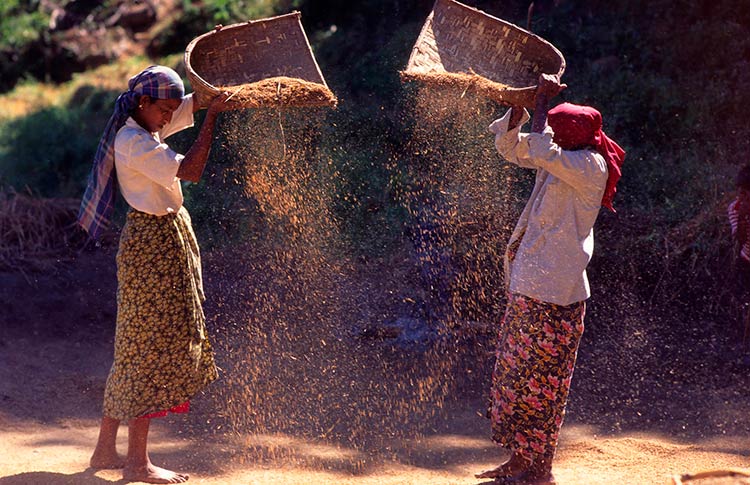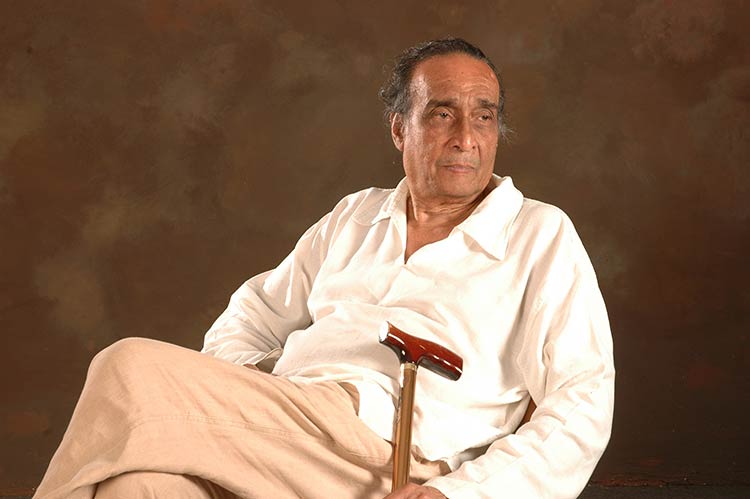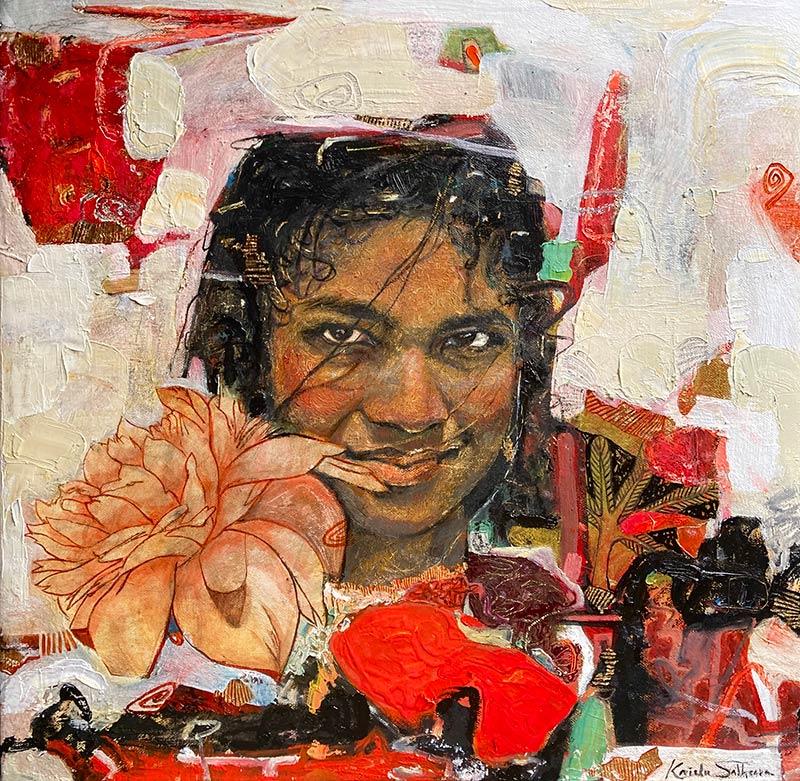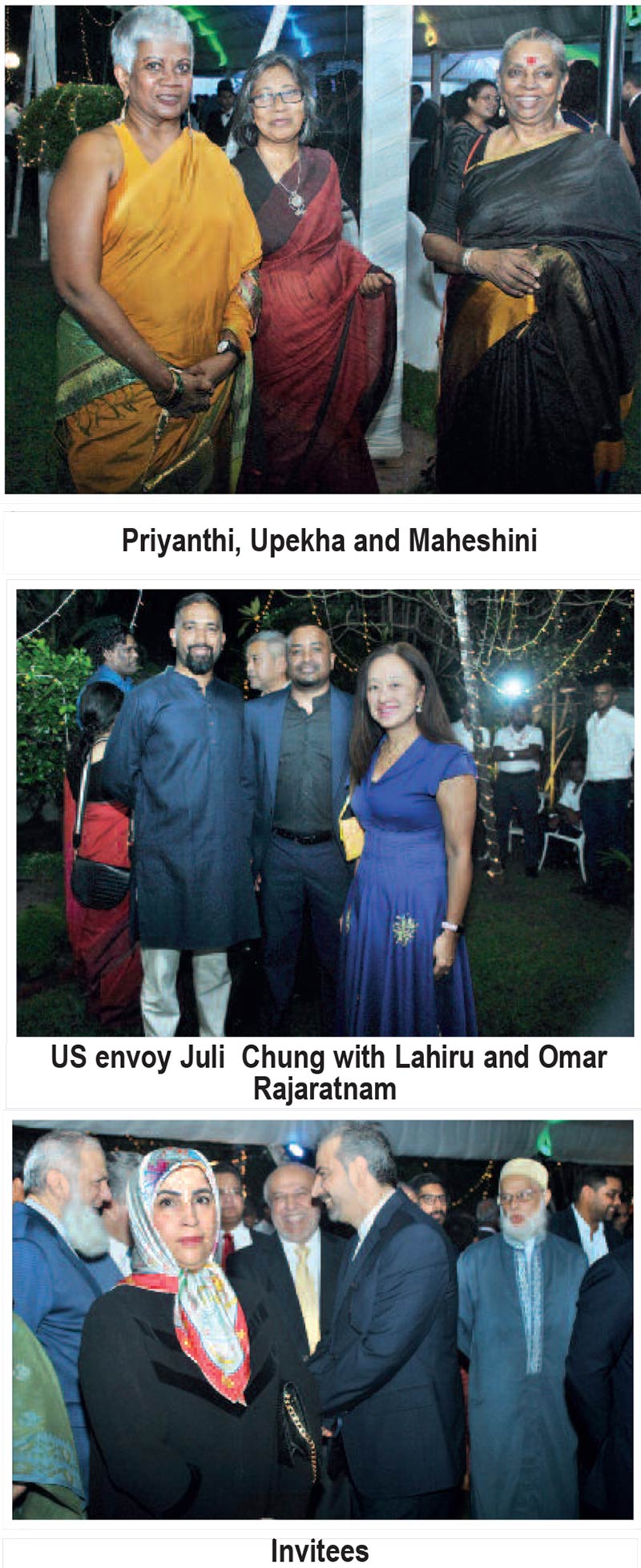Life style
Believe the child says Dr Tush
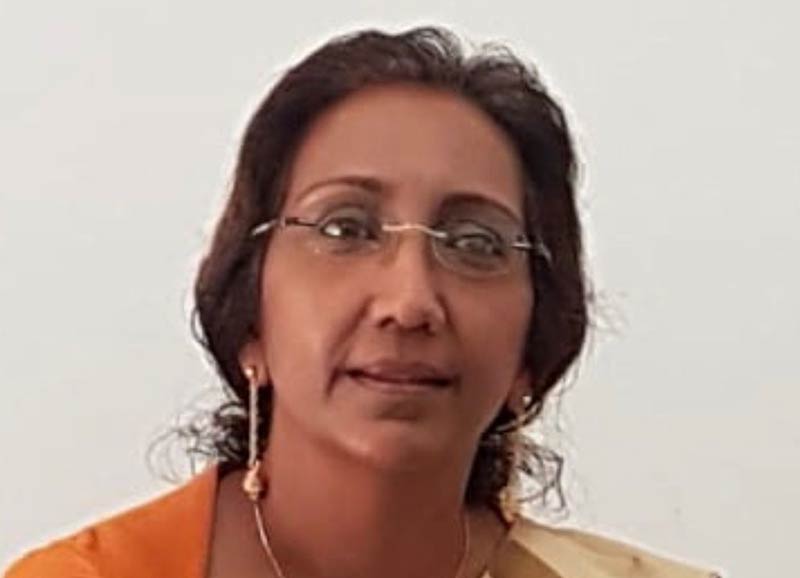
By Zanita Careem
 Sri Lanka has become an unsafe environment for women and children said Dr. Tushara Wickramanayake, fondly known as Tush.A family physician and founder, Chairperson of Stop Child Cruelty Trus. An old girl of Visakha Vidyalaya, she has been an active voice against all
Sri Lanka has become an unsafe environment for women and children said Dr. Tushara Wickramanayake, fondly known as Tush.A family physician and founder, Chairperson of Stop Child Cruelty Trus. An old girl of Visakha Vidyalaya, she has been an active voice against all
forms of injustice on children and women from an early age. A General Physician, practicing in UK and Sri Lanka. Tush has worked in child welfare since Tsunami 2004 and became a passionate child rights advocate turning adversity to advocacy after her own 11 year
old daughter was subjected to corporal punishment andmental abuse in an International school in 2018. Spearheading a national campaign to end violence against children in Sri Lanka,Tush’s self-learning experience of the crippled child protection mechanism, indefatigable efforts in advocacy work, compassion and empathy in raising awarenesshas resulted in global recognition and historical achievements in a short period of time. Can you tell us about your experience working with children who have been affected by abuse?
Child abuse can be broadly categorized into physical abuse, sexual abuse, mental abuse and neglect. Physical abuse, cruelty, corporal punishment are the most common form of abuse in Sri Lanka and globally affecting 1.3 billion children each year. The complaints received on cruelty by the National ChildProtection Authority (NCPA) have trebled in ten years with 2238 cases reported in 2023.Sexual abuse, especially on-line abuse isincreasing rapidly. Whilst there may beinjuries and scars visible immediately after physical and sexual abuse, all forms of abuse affects the child mentally. But mental scars may not be obvious and may require years before a formal clinical diagnosis is made.
Therefore, mental abuse is often overlooked, their true effects amplifying years later into adulthood and cascades to the society. Often, the impact of abuse depends on the child’s own internal resilience and external support systems.For example, a child who is forced to kneel down maybe immune to it because it is normalised in his/her environment whilst another child maybe traumatized because it is unfamiliar in his/her surroundings. Irrespective of our own upbringing and prejudices we must endorse zero tolerance of any form of abuse against children growing up in the 21st century.
How do you handle situations where you suspect abuse but don’t have concrete evidence?
The first and simple golden rule is BELIEVE the child. 90% of child abuse occurs within the home environment, perpetrated by people whom the child loves and trusts. Most of the time, the abuse occurs for years, maybe even known to some adults and ignored because they are afraid of the scandal this may reveal or crippled by the power hierarchy. If the child mentions anything untoward try not to dismiss the child or defend the alleged perpetrator in the intention of saving the family name, school name or reputation of the person. Children may show symptoms of abuse, which may be subtle – becoming quiet and withdrawn, spends more time in seclusion, avoids things they normally enjoy, refusal of school, spends more time on devices, eating/sleeping disturbances,
substance abuse, mood changes including anger and anti-social behaviour, risk taking behaviours like staying out too late or disappearing without informing parents, joining new clicks of friends, etc. The best way to ensure your child comes to you as the first port of call if they are in trouble is to have a healthy parent child communication without persecution or blame. If the child feels they can make mistakes without being penalized,they will be forthcoming and transparent. Encourage your child to follow the traffic light system from the age that they can walk and talk to Red – shout, Orange – run and Green – tell someone they trust. Introduce a security ring where the child identifies 2/3 adults whom they trust. It can be parents, teachers, grandparents, elderly siblings, etc.Always remember the first and last step is to BELIEVE the child.
What was most rewarding and what was most challenging about working with child victims of abuse?
The globally accepted term is “survivor” of child abuse because victimizing someone is disempowering them. The most rewarding is when the child is able to overcome the trauma and be able to function at the highest individual capacity they consider as being normal for them. This could even be as simple as waking up and getting to school consistently. The most challenging has been to deal with the bureaucratic lethargy in finding the care, support and justice in the State mechanisms. Once the child is removed from the immediate risk, we need to consider the safest and healthiest option.
This requires a multi-disciplinary approach with the family unit at the heart of the solution because research has shown that chances of a child thriving within a caring family are more than under institutionalised care. Aligned with this are relevant input form education, health, justice, rehabilitation, social and caregiver support. Caregiver support includes education, economic and mental support, which is often neglected whilst focusing on the child.
Can you describe a difficult case you have worked on and how you handled it?
The most recent was a case of two sisters, aged 17 and 14 years who were suspected of being sexually harassed by the father in a remote village. Although there was no conclusive evidence of actual sexual abuse the stories from the girls were convincing for me to take immediate action. The mother was a labourer on meagre allowance whilst the father was the main provider. The police were being influenced by the father and his connections, a not too unfamiliar scenario in maintaining law and order in Sri Lanka. We filed a case in court requesting restricted access to the father and full guardianship for the mother. I tried valiantly to get them to a government safe home but failed. The father followed them around and kept on physically harassing the family.
The next thing I did was to find a higher paying job that gave the mother some financial independence. She found a relative in the area who helped them to relocate. Even changing schools was an issue because the father objected for the old school to provide the leaving certificate as he had signed their admission forms. The school authorities were paralysed by his threats. I had to write to the Education authorities alerting them of acting in contrary to court orders and violating the basic education rights of the children; after months of exchanging correspondence, the girls were enrolled in the best school in the region where they are excelling now with counselling support. After one year, they still keep in touch with me, share their achievements and we hope to meet them personally when they come to Colombo soon.
What is your understanding of child protection?
Many are confused by these terms: Child Safeguarding – encompasses broader preventive measures within the organization. It refers to actions that address how business operations and work practices impact children’s welfare. The purpose is to prevent harm before it occurs. The key actions are implementing policies, training staff and promoting safe practices. It is applied continuously as a proactive approach and has collective responsibility. Example: Conducting risk assessment in the prospective service delivery points.
Child Protection – is an important part of safeguarding and refers to the actions an organization takes to address a specific concern that a particular child is at risk of significant harm due to her contact with staff, family, etc. The purpose is to intervene when children are at immediate risk and prevent further The key actions are investigating cases, providing support, reporting mechanisms and ensuring safety of vulnerable children. It is applied after harm occurred and shared by everyone much wider.
For example reporting cases and providing psychosocial support to a child who has been physically abused. Child Protection Programs – these are specific initiatives designed to address child protection issues to protect children through targeted interventions. Advocacy programs to lobby parliament to pass the Bill on abolishing corporal punishment. The safeguarding mechanisms are non-existent in Sri Lanka with no systematic Child Protection policies either. Hence, the child protection programs are inconsistent elevating child abuse as a top five grave crime according to the annual grave crimes report by Sri Lanka police of 2023.
What are the current child protection mechanisms in Sri Lanka and how does it compare to the rest of the world?
Sri Lanka ratified the UN Convention of the Rights of the Child (UNCRC) in 1991. There are 45 articles but even if we can’t remember them all, just remember Article 3, ‘in the best interest of the child’. Despite the cabinet approving the National Child Protection Policy in 2019, the NCPA has failed to implement it to date. Likewise, there are many laws and regulations that are not being implemented effectively, especially Ministry of Education Circular forbidding physical punishment of students in schools. It is ironic that although in 2017 Sri Lanka was honoured by being the only South Asian path-finding country focused ending violence against children,
the National Partnership to End Violence Against Children (NPEVAC) collapsed in 2018 and we have been lethargic to introduce legal reforms to end corporal punishment,
the most common form of child abuse. Due to absence of safeguarding policies and mechanisms there is a high incidence of abuse occurring within schools and care homes under Probation and Childcare Services. As none of the governments elected have even acknowledged child welfare as the core of the national political agenda, such abuse can be con For example in UK, a ten year old girl child was abused and murdered by her parents in August 2023.
The perpetrators were arrested, the criminal court case was concluded in December 2024 and the accused were given life imprisonment sentences. In contrast, in Sri Lanka, a 15/16 year old girl was allegedly sexually abused in a politician’s home and died after severe burn injuries in July 2022 but the investigations remain incomplete and no indictments have been filed to date. The Auditor General’s Report of 2022 concluded there are over 40,000 cases of child abuse backlogged at the NCPA and Attorney General’s Department. This is a national tragedy.
What are the three things that the government can implement immediately to improve the child protection crisis?
Appointment of a Presidential Task Force for children Provide additional budget allocation for education and child welfare Finalise the legislative process, particularly the Bill on Penal Code Reforms to Abolish Corporal Punishment, which was passed in Cabinet in September 2024. We hope the new government will present this Bill to parliament.
Life style
Celebrating unity and pride!
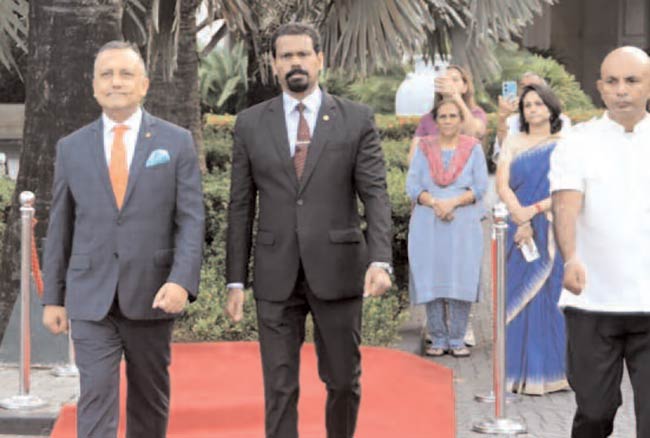
Taj Samudra, Colombo commemorated India’s 76th Republic Day in the hotel premises on 26th of January 2025. Area Director Sri Lanka and Maldives, Samrat Datta, hoisted the Indian national flag in a heartfelt ceremony, joined by hotel team and resident guests. The celebrations concluded with warm greetings and indulgence in delectable refreshments, marking the spirit of unity .
Life style
THE ENDURING INSPIRATION THAT IS NIHAL FERNANDO
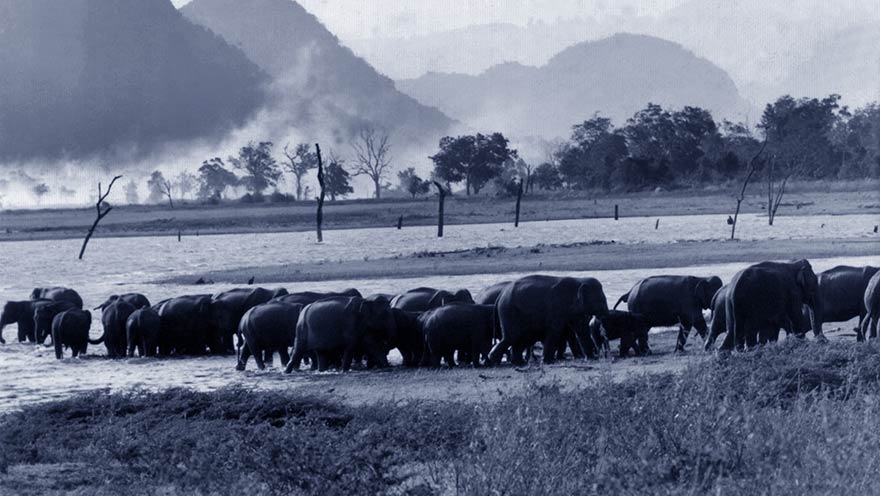
Rohan Wijesinha
“One thing can certainly be said of Nihal Fernando. Despite his many years of photographic adventure in the receding past, he fixes his eyes firmly on the future and the task that faces the next generation…
‘All my work has been for the children of Lanka,’ he says. ‘I hope it will help them on their way, as they become the leaders of the next millennium.’
Charith Pelpola, Serendib, Vol. 17 No. 3, May-June 1998
Everyone needs something or someone to inspire them, to reach out from their comfort zone for something or somewhere new. Mine came through my love for wildlife and the wilderness. My inspiration – Nihal Fernando (NF). Unbeknown to me this legend of Sri Lankan photography and conservation had been reading my published scribbles and had decided that he possibly had a more worthy role for me to play. From that moment my approach to wildlife and the wilderness changed from merely being an observer, and sometimes recorder, of its beauty, to that of joining in the fierce fight for its preservation for the future. No more time to wonder but the passion to protect it, for present and future.
I had heard of NF, not just as one of the finest photographers this country has ever had, but who also engaged in many campaigns to conserve areas of environmental importance that were coming under threat from the increasing, unplanned, and often illegal, development.
Eppawela
I soon discovered that there was more to the man than merely a taker of exquisite pictures. After just a single meeting with him, I was plunged into the campaign to protect Eppawela from a proposed mineral investment agreement for exploration and mining of phosphate. The said agreement between the Sri Lankan Government and a foreign company would have had many adverse consequences on the environment, the rich archaeology of the area, and on the people who lived there. Phosphate reserves which are available to Sri Lanka for several centuries would have been taken out in a matter of 30 years, with little overall benefit to the country.
Much has been written about this landmark case and judgment but it was during this time that I realized that NF was not only a fount of knowledge, but also a supreme organizer, and motivator. He brought together people from diverse backgrounds who all had a common interest in preserving the environment; there was a role for each to play, every one, and they were made to feel comfortable in being a part of the process. He engaged with the religious community, academics (from Sri Lanka and elsewhere), lawyers, conservationists, journalists, and even Trade Union leaders. For the first time in the history of the Trade Union movement in Sri Lanka, and possibly the World, a half day General Strike was called in support of an environmental cause – Eppawela. Thousands attended the accompanying rally outside the Fort Railway Station. All of this thanks to the amazing organizational and leadership skills of NF. The judgment of this case, too, made legal history and is worthy of a read by any who has a love for this land and its people, and for Conservation Law.
Vadai Parties
NF hosted weekly strategy meetings at his home at which ginger beer and vadais (a savoury snack made from lentils) were served. Knowledge was shared and the next steps planned, including that of a necessary Court Case. My talents were used in joining those of the team whose task was the dissemination of knowledge to the public on how damaging the rape of Eppawela would be to the country and its people. This was in the form of articles in the newspapers, not just in English, but in all three languages.
Foremost of these writers was Selvam Canagaratna (SC). In fact, SC was at the heart of many of the conservation campaigns organized by NF. With a journalist background and a career in publishing, he had a supreme command of English, and of its pertinent use, to fire the reader with the same fervor he had for the subject. A ferocious champion of the cause, if NF was ever looking for a more loyal deputy and friend, he could have not had any better than SC by his side.
There were many others, too numerous to mention, who were part of this and other campaigns. One other, however, who is deserving of special mention, and who was always up for the fight, was that legend of Sri Lanka, Iranganie Serasinghe. Always there, whatever her other commitments, and ever courageous in expressing her feelings, she is still a spur to all who love nature and environment, and artistic talent, of this blessed isle.
A Man for all
Should history write more of NF, as it has and no doubt will in the future, but only as a supreme photographer whose mastery of light was unsurpassed, then it would just be describing a part of the man; a mere chapter of an epic tale. NF loved Sri Lanka, almost all aspects of it, with the passion of a true patriot, though he would cringe at the term as it has come to be used today. He collaborated with writers to compile works on its history, on its culture and lifestyle, he compiled a travel guide, the earliest of its kind in Sri Lanka, and a Handbook for the Ceylon Farmer, another passion of his, among other things. It was his way of sharing of the beauty of this land.
Above all he admired this Island’s Nature, its culture, its history and its people. For them, he was willing to fight fiercely, and attract others to his cause. This despite being a man of few words, who would rather observe and listen, but with the talent to almost immediately assimilate and analyze all of the information that was being shared. This was why the room would fall silent when he spoke, for his words were always few, to the point, and showed the way forward, for all. For NF was never one who willingly sat at the head of the table but would rather be a part of the team, provided the group achieved its purpose, albeit unconsciously guided by him. For his greatest talent was his ability to converse with anyone, and his extensive travels throughout Sri Lanka meant that he met many.
Apart from the Eppawela Campaign, he was a campaigner for the banning of mechanized logging in the Kanneliya and Sinharaja Rainforests. He served on the Board of Ruk Rakaganno, the Environmental Foundation and the Fauna & Flora Advisory Committee of the Ministry of Environment. He was involved in public interest litigation, seeking court rulings with regard to the Intellectual Property Bill and the Water Reforms Bill, the former ensuring that Sri Lankans would have access to quality drugs at affordable prices and the latter which ruled against the privatization of water.
His inspiration lives on
NF was always generous not only with sharing his knowledge, art and skill, but also in encouraging budding photographers and artists to practice their talents. This is best demonstrated by the wealth of outstanding photographers who learned from him, worked with him, apprenticed under him, and with his blessing, made names for themselves thereafter. With other artists, he organized exhibitions so that they could show off their skills and genius. As such, in a celebration of the photographic art of NF, it is fitting that along with his pictures, those of the other photographers who came under his influence should also have their work shown. Not only photographers, but artists and sculptors too, all who were inspired by him and his work, have a place.
The exhibits will feature the work of NF, Pat Decker, Maxi Decker, Mithra Weerakone, Luxshmanan Nadaraja, Charith Pelpola (all formerly of Studio Times Ltd.) as well as the talents of contemporary artists and sculptors Asela Abeywardene, Channa Ekanayake, Sumudu Ellepola, Chandika Gunasekara, Nimalasiri Jayasena, Hiranya Malwatta, Salome Nanayakkara, Thisaru Prabashwara, Ruwan Prasanga, Dominic Sansoni, Kavindu Sathsara, Kasun de Silva, Charlene Thuring, Sarinda Unamboowe, Shane Walgama and Karunasiri Wijesinghe.
An Exhibition of Photographs by Nihal Fernando, and others, will be held at the Barefoot Gallery, 706 Galle Road, Colombo 3, from 31 January 2025 – 06 February 2025, between 10 am-6.30 pm daily. Entrance is free and all exhibits will be available for purchase.
Life style
Republic Day celebrations at India House
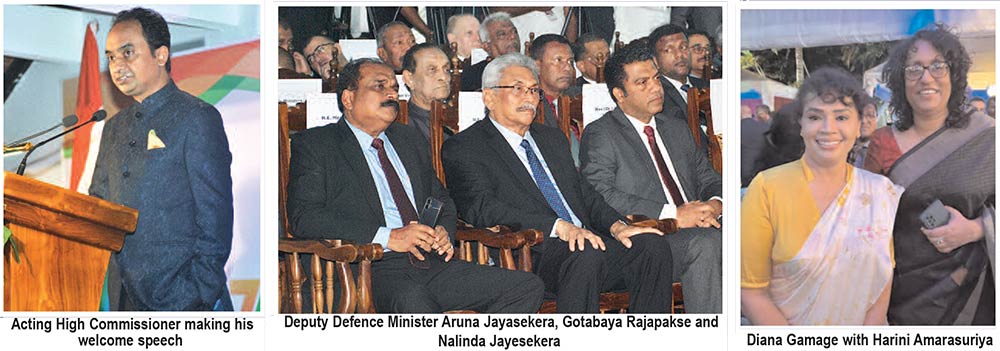
The 76 Republic Day Celebrations, were held at India House, followed by a grand reception The formalities of brief speeches were followed by mingling with invited guests. There were many men in smart uniforms and dark lounge suits with women bringing glitz and glamour to the venue, many of them in saree. Acting High Commissioner Dr. Satyanjal Pandey in his speech said this day is not just about reflection but also about honoring values and principles that have shaped India at the world’s largest democracy and the fifth largest economy. Celebrations were also marked with military parades and cultural performances. (Zanita)
Pix by Dharmasena Wellipitiya
-
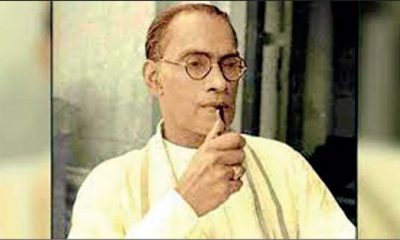
 Opinion6 days ago
Opinion6 days agoCost of ‘Sinhala Only’
-
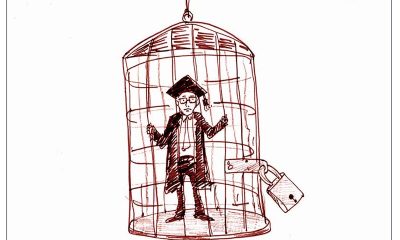
 Features6 days ago
Features6 days agoA conversation that cannot be delayed
-

 Sports6 days ago
Sports6 days agoAussies brought the best out of me – Aravinda
-

 Editorial6 days ago
Editorial6 days agoOnly delivery can save govts.
-

 Editorial5 days ago
Editorial5 days agoFish or cut bait
-
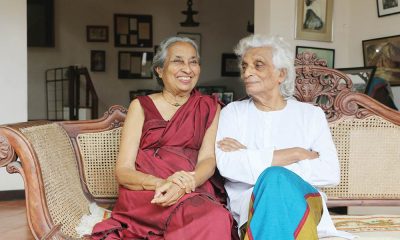
 Features2 days ago
Features2 days agoA singular modern Lankan mentor – Part I
-
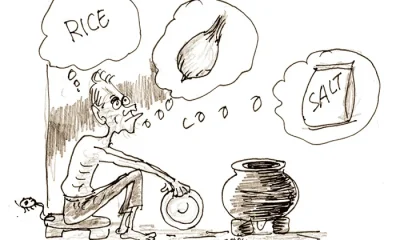
 Opinion5 days ago
Opinion5 days ago‘Not even congee now!’
-

 News4 days ago
News4 days agoWar crimes: Canada’s Conservative Party leader vows to ‘lead the world’ in seeking prosecutions against Sri Lankans




